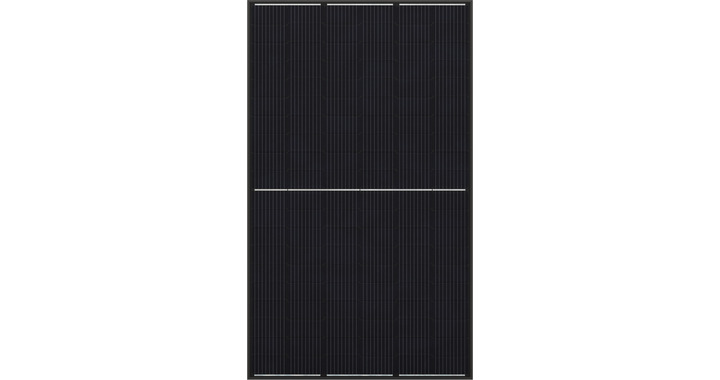Best Solar Panels
If you plan to equip your home or commercial plant with a solar generating system, you have to investigate which solar panels are best on the market today and which manufacturers are most reliable. We have done the research work for you and have compiled a full listing of the top-ranked solar panels, based on a number of characteristics.
See also: Solar Manufacturing News | Top Solar Panel Manufacturers |
How to Choose the Best Solar Panels
Installing a solar system at home is becoming a more and more attractive option. Firstly, the prices of photovoltaic modules are getting lower and they are becoming more affordable. Secondly, governments of different countries introduce various incentive programs for solar plant owners. And finally, the climate issues and global warming encourage people to become more environmentally conscious and to switch toward cleaner energy sources.
Solar panels are the future of renewable energy generation. They are the perfect investment if you’re looking for something than can give you energy all year along. However, before you jump to make this investment, it is important to consider all the aspects to get the best return. For this purpose, we have compiled all the important information you need in this article.
Why use solar panels?
There is no denying that solar panels are becoming more popular by the day, the reasons for this increase in popularity can be classified in to micro and macro level reasons.
Low Electricity Cost
The biggest micro-level reason to shift from grid electricity supply to private solar panel electricity supply is the increase in the price of electricity. Office of Gas and Electricity Markets (OFGEM) recently announced that households should anticipate the sharp rise in electricity costs, even though there was already a 50% increase in electricity prices in the last 6 months. To avoid paying high costs of electricity people prefer to invest in electricity sources that are long lasting and cheaper in the long run.
Latest data extracted by Irena in 2024 on the cost of solar energy from the year 2010 to 2024 show the decrease in solar costs for multiple countries. The data utilizes the 2019 USD per kilowatt per hour to depict the cost of solar panels. As you can see in figure 1, although there are some outliers and discrepancies, the overall trend shows that there is a decreasing trend for solar module costs for a variety of countries including the United Kingdom.

Figure 2 UK Solar Panel Costs, Source: Irena Statistics (2022)
Considering the United Kingdom, in the year 2010 the cost of a single solar power module was high in the year, nearly, 0.47 USD/kWh, this cost steadily reduced to 0.455 USD/ kWh in 2011. However, in the subsequent year 2012, a steep downfall from 0.455 USD/kWh to 0.278 USD/kWh in module price was observed. After this, from 2012 to 2015, a linear and stable decrease in cost of solar modules was observed. Very little change was recorded between the years 2015 and 2016, as the cost of panels went from 0.61 USD/kWh to 0.59 USD/kWh. In the year,2017, another cost reduction was observed as the price fell to 0.135 USD/kWh, but in the next year, for the first time in the last ten years, a small increase in solar panel costs up to 0.145 USD/kWh was observed. But the cost further reduced to 0.11 USD/kWh in the year 2019, and is expected to fall in the upcoming years. Therefore, as time goes by, solar panels in the UK will become more and more affordable.
Evidence also suggests that private domestic owners of solar panels break even their price, in under a decade; and since solar panels can produce energy up to 40 years, clearly the net benefit is very large. For this very reason, more and more people are interested in and are considering buying solar panels to privately generate their own electricity.
Grid Independency
When you consume electricity generated by the grid, you are completely dependent upon it. Having a personal solar panel would save you from such dependency, whether you use solar energy as your primary or as your back up energy source. Making you overall more secure in terms of electricity consumption.
More energy
And if you are living in a region that has excess sunlight, energy generated by solar power is the best option, as it would provide you with electricity throughout the year, given you have a good and reliable solar panel. Moreover, the energy generated privately will not need long transmission systems, and would eliminate any chances of possible energy loss due to faulty transmission.
Eco friendliness
The second major reason is more macro-level. Solar panels are the most ecofriendly and renewable energy source that can be used privately as well. There has been a recent revolution where people have actively started looking for cleaner and pollutant-free options for everything, ranging from plastic straws to large company waste dumping. One of these things that affect everyone, is the source of energy; since energy has always been generated through heat energy by burning coals, which results in carbon dioxide emission, it became undesirable. The solution to this problem is clean and renewable energy sources, two of which are wind and solar energy. However, installing windmills is very expensive for the governments, so the governments themselves urge people to opt for the use of solar panels.
How to select the proper solar solution for your home so that you could enjoy the benefits without running out of money?
As electricity is getting expensive, people are opting for cleaner and greener energy sources, even governments are promoting greener energy sources through incentives, this led to a considerable increase in the demand for solar panels. Manufacturers have developed a wide range of solar products to suit the different needs of customers. Customers can easily select and purchase a product that matches their particular requirements.
Choosing the best solar panels is quite a challenging task, since there are plenty of panel makers and even more panel models available on the market. On the one hand, such a wide selection is advantageous because you can get an optimal device for your home to fit your budget. But at the same time, one can easily get lost in such a diversity. We have made a thorough investigation of the best products offered by the top solar manufacturers and compared them based on a number of characteristics. When choosing a solar panel, one has to pay attention to the following essential parameters.
1. Power. It is a key characteristic determining a panel’s expensiveness. Power is measured in watts and means how much electricity a panel will produce. Most residential panels have a power output ranging between 200W and 400W. For those who plan to supply most of their electricity needs from solar, we would recommend choosing 300-watt panels. If you content yourself with a smaller part of solar energy, you can consider more affordable products up to 275 watts.
2. Efficiency. This factor shows how much light a panel will convert into electricity suitable for usage. Conversion efficiency of domestic solar panels is 16-22 percent. The most efficient solar panels have a conversion rate of at least 19%, but they are rather pricy. So, if you have a big rooftop, you can think of installing a few less efficient panels. And don’t forget that what you have to check is the efficiency of the whole PV module, not an individual cell.
Although manufacturers work hard to provide high efficiency results, the actual efficiency might differ from the expected efficiency due to exogenous factors.
- Shading refers to when an object blocks the sunlight from reaching the solar panel. As little or no sunlight is absorbed by the panel, efficiency is compromised and little energy is produced. Things such as trees, higher buildings, or even accumulated dust can cause inefficiencies due to shading. Therefore, proper measures should be taken by the owners (especially home owners, since they have little space) to ensure that the sunlight is not blocked by any object.
- Solar irradiance (measured in W/m2) is the amount of solar energy from the sun in an area of 1m2. Solar irradiance depends up the time and location of the panel, these have a direct relationship with solar irradiance and energy produced, i.e., higher the absorbed light rays, the higher the solar irradiance, the greater the energy production. While on the other hand, temperature has a negative relationship with solar irradiance and energy produced.
- Panel orientation is another obvious factor that influences panel efficiency. A panel should be angled in a way that ensures maximum absorption of sunlight, and it should not face away from the sun.
3. Type. Depending upon its design, material, performance and price, there is a variety of types of solar panels. At large, there are three popular types of solar panels: monocrystalline, polycrystalline, and thin-film solar panels.
- Mono and polycrystalline are made from silicon, although their composition differs significantly. The major difference between these two, is the efficiency; monocrystalline panels are drastically more efficient than polycrystalline; although the latter is a lot cheaper than the former. These two are the best for residential uses depending upon your budget and energy requirement. Thin-film solar panels differently produced and, are light and portable in feature, making it the best for RVs, traffic lights, but not for residential use.
- Bifacial solar panels are different than traditional solar panels, as they have cells on both sides of panel, as the name suggests. The two-sided panels help in trapping maximum light as possible- making it the most efficient. Granted it is the most efficient, it is unpreferred for domestic use as it requires large space, so it is mostly used by organizations with large spaces.
- Furthermore, one can choose between framed and non-framed solar panel designs. Non framed solar panels are better for those who wish to install their panels on the roof, but have little roof space.
4. Product or materials warranty. This is usually in the range of 10-25 years, which means a manufacturer is obliged to fix or replace a broken product within this period for free. The equipment warranty is your protection from product fault caused by original defects or environmental impact. The top panel makers provide their devices with at least 15 years of warranty.
5. Performance or power warranty. This shows how long a panel is supposed to perform at its initial output and how much power it will produce after the warranty period. Commonly, PV panels are said to operate at 80-90 percent of their original capacity after 25 or 30 years.
6. Temperature coefficient. Temperature is one of the variables that can affect the efficiency of the solar panel; every solar panel has a specific temperature at which it functions the best. Photovoltaic panels are best performing under standard test conditions. Every degree C above 25°C causes some performance degradation, and temp coef. shows this decrease in percentage. For the majority of solar products, this coefficient ranges between -0.30% and -0.40% per °C. This means that a panel with a coef. of -0.3 %/°C will perform 3% worse at a temperature of 35°C. The best solar panels have the lowest temp coefficient.
7. Size. In case of a small rooftop area, size of a solar panel is an important parameter. Most photovoltaic panels have an area of about 2m2. However, there are also more compact-sized models available for smaller roofs.
8. Weight. As well as the previous factor, the importance of weight also depends on your roof. If you have any doubts regarding the strength of your rooftop, you have to consider lighter panel models.
Solar shoppers in the United Kingdom are recommended to check whether the product they would like to install is certified by MCS. Microgeneration Certification Scheme is the UK’s QA scheme for renewable energy and heat generating techs. If you don’t want to compromise the quality for doubtful saving, make sure both the solar module and the installation company you’ve chosen are MCS-approved.
One more piece of advice is to get familiar with reviews and feedback on different solar panel brands through the internet or among your family and friends who already use them. This way, you can learn if there are any issues the panel owners have encountered and whether they are satisfied with a product. As soon as you’ve chosen a panel manufacturer you like, contact a reliable solar company to get to know which device will suit your particular needs.
A common price of a photovoltaic system ranges between six and seven thousand pounds sterling, which includes the installation price. However, there are cheaper solutions priced about £3,000. The price depends on the manufacturer, panel type, efficiency and power, as well as cost of installation. While calculating the up-front costs, take into account the long-term savings on electricity bills. In order to choose the best price, compare offers from at least two or three commercial solar installers. The more quotes you consider, the more you can save on installation. It is reasonable to consider bids from local small solar companies, because large and well-advertised installers usually charge more, which does not mean they propose more qualitative service. So, we’d recommend to get as many quotations as you can to compare prices and equipment options which could optimally suit your home size and electricity demands.
Attribute-wise Best Ranked Solar Panels
People’s requirements are different when it comes to solar panels: some prioritise power and efficiency, others need value size and portability. To serve this purpose, we have ranked the best solar panels according to different attributes.
High Power
Power is the main goal of having a solar panel, the higher the power the better. Some models have different power outputs depending upon their efficiency, size, technology. The table below shows that Canadian and Jinko Solar panels are leading examples in terms of power output, however since Jinko has higher efficiency than Canadian Solar panels, it is a better option.
|
Manufacturer
|
Solar panel
|
Maximum power output
|
Efficiency %
|
|
Canadian Solar
|
HiDM CS1U-410MS
|
410W
|
19.89 |
|
Jinko Solar
|
Tiger N type 66 TR
|
410W
|
21.4
|
|
RES
|
Alpha Pure
|
405W
|
21.9
|
|
Trina Solar
|
Vertex
|
405W
|
21.5
|
|
Solaria
|
PowerCT Pureblack
|
400W
|
20.2
|
|
Sunpower
|
Maxeon 3
|
400W
|
22.6
|
High efficiency
Efficiency is one of the most important factors to consider before investing in a solar panel. Greater efficiency means there is less loss of energy therefore higher the efficiency the better, and more cost- effective results.
|
Manufacturer
|
Solar panel
|
Maximum efficiency
|
Power (W)
|
|
SunPower
|
Maxecon 3
|
22.6%
|
400
|
|
LG
|
Neon R Ace
|
22%
|
380
|
|
REC
|
Alpha Pure
|
21.9%
|
405
|
|
Panasonic
|
Evervolt
|
21.7%
|
380
|
|
Jinko Solar
|
Tiger Pro 66TR
|
21.4%
|
410
|
|
Hyundai
|
HiES400UF
|
21.3%
|
400
|
This table shows all the models, with high efficiencies, with Sunpower’s Maxecon 3 ranking first with 22.6% efficiency and 400 W per hour. It is clear that generally, greater the efficiency of a model, the greater will be the current supplied.
Best Performance Warranty
Although performance warranty has no direct effect on the performance of the solar panels, it is a vital component as it indicates the durability of the product- how well will it perform even after the end of its warranty? To observe this, companies provide an estimate that shows the efficiency of the model at the end of its warranty, hence the key here is, greater the efficiency after warranty period, the better the product.
|
Manufacturer
|
Solar panel
|
Efficiency after 25 Years (%)
|
|
Sunpower
|
Maxeon 3
|
92%
|
|
Rec
|
Alpha pura series
|
92%
|
|
LG
|
Neon R
|
88.4%
|
|
Q cells
|
Qpeak DUO G9+
|
86%
|
|
Winaico
|
WST-375MG
|
85.3%
|
Size and Portability
Depending upon the buyer, size may as well be an important factor to consider. People who want compact and portable sized panels may own RVs or want to power smaller devices. In this case Jackery’s Solarsaga portable tops the table, however, it can very little power output, sufficient to charge small devices only. Comparing it to Panasonic HIT N245 Slim, which is a bit larger than Jackery, it provides an impressive 340W per hour.
|
Manufacturer |
Model |
Dimensions (mm) |
Area (m)2 |
Power (W) |
|
Jackery |
Solarsaga portable |
580x500 |
0.29 |
100 |
|
Panasonic |
HIT N245 Slim |
1580x798 |
1.26 |
340 |
|
Sharp solar |
NQR series |
1318x980 |
1.29 |
258 |
|
Panasonic |
HIT N295 COMPACT |
1463X1053 |
1.54 |
295 |
|
SunPower |
X Series X22 |
1559x1046 |
1.63 |
360 |
|
Canadian Solar Panel |
HiDM CS1U |
992x1700 |
1.69 |
410 |
|
LG |
Neon 2 |
1686x1016 |
1.71 |
340 |
Lightest
Weight becomes an important factor for those wanting to install their panels on the roof. One must consider the amount of weight their roof can bear otherwise it can result in serious damage. The lightest model so far is the Panasonic HIT N245 Slim, not only does it have light weight of only 15 kg, it also has good power output and efficiency, making it one of the best choices for residential or medium device purposes.
| Manufacturer | Model | Weight (kg) | Power (W) | Efficiency (%) |
| Panasonic | HIT N245 Slim | 15 | 245 | 19.4 |
| Sharp Solar Panels | NQR 258H | 17 | 258 | 20 |
| LG | Neon series | 18 | 370 | 21.1 |
| Sunpower | Maxeon 2 blk | 19 | 400 | 22.6 |
Lowest Temperature Coefficient
During experiments, panels are usually tested at 25⁰C, however it is obvious that in the real world, due to a variety of reasons, temperature change is bound to occur. Therefore, it is important to take into consideration, the likely changes in performance as a result of temperature change. The lower the temperature coefficient, the higher the efficiency in the presence of different temperature. Many companies are still attempting to reduce the temperature coefficient, yet, the minimum temperature coefficient achieved is still -0.26%/⁰C.
| Rank | Manufacturer | Temperature coefficient |
|---|---|---|
| 1 | Panasonic | -0.26 |
| 2 | REC Group | -0.26 |
| 3 | Solartech Universal | -0.26 |
| 4 | SunSpark Technology | -0.28 |
Best Product Warranty
Product warranty helps the customer make the most of the product even in case of possible damage, i.e., minimizing the losses and maximizing the benefits gained from the product. Good companies offer long term warranties, and provide their customers with the best customer service regarding any complaints and damages. Therefore, product warranty is something customers must not ignore before buying panels.
|
Manufacturer |
Module |
Warranty Period |
|
Project Solar Evolution |
Ultra-Power Edition |
Lifetime |
|
Canadian Solar Panels |
KuDymond CS3U-MS-FG |
30 years |
|
LG |
NeOn series |
25 years |
|
Panasonic |
HIT series |
25 years |
|
SolarWorld Solar Panels |
Sunmodule |
20 years |
The best solar panels in the middle range
The last comparison table is meant for lower-budget homeowners who would like to choose the decently performing product they can afford. The panels below feature the best mid-range combination of power and efficiency.
|
Manufacturer
|
Solar panel
|
Power/efficiency
|
|
Trina Solar
|
HONEY PD05
|
285W / 17.4%
|
|
Trina Solar
|
HONEY M PLUS
|
315W / 19.2%
|
|
Panasonic
|
N300
|
300W / 19.5%
|
|
Project Solar
|
EVO Ultramax
|
330W / 19.66%
|
|
LG
|
NeON®2 Black
|
320W / 18.7%
|
|
Canadian Solar
|
KuPower
|
300W / 18.05%
|
The best product warranty solar panels
The following manufacturers provide the longest warranty for solar panel materials. All the companies listed guarantee their products materials will last for 25 years (compared to standard 10-year warranty).
• LG
• Panasonic
• SunPower
• Solaria
• Silfab
• Q CELLS
These were the technical ways to ensure a good solar panel, but it is also important to consider reviews of older customers with solar panels as well. Knowing the experience of family and friends with certain solar panels will be beneficial, they can give their opinions regarding the cost, performance and their overall experience with the manufacturers.
The Top Solar Panel Manufacturers and Their Best Products
The solar panel industry is a growing industry, many companies are taking their chance by investing in research and development to produce solar panels. However, not all are successful in producing quality products. As a reference, the list below shows the current best manufacturers you must consider if you are looing to buy a solar panel.
- LG
- Panasonic
- Canadian Solar
- Sharp
- SolarWorld
- Yingli Solar
In this section, the top solar panel models along with their individual specifications for medium to residential use will be disclosed.
Sunpower Maxecon 3
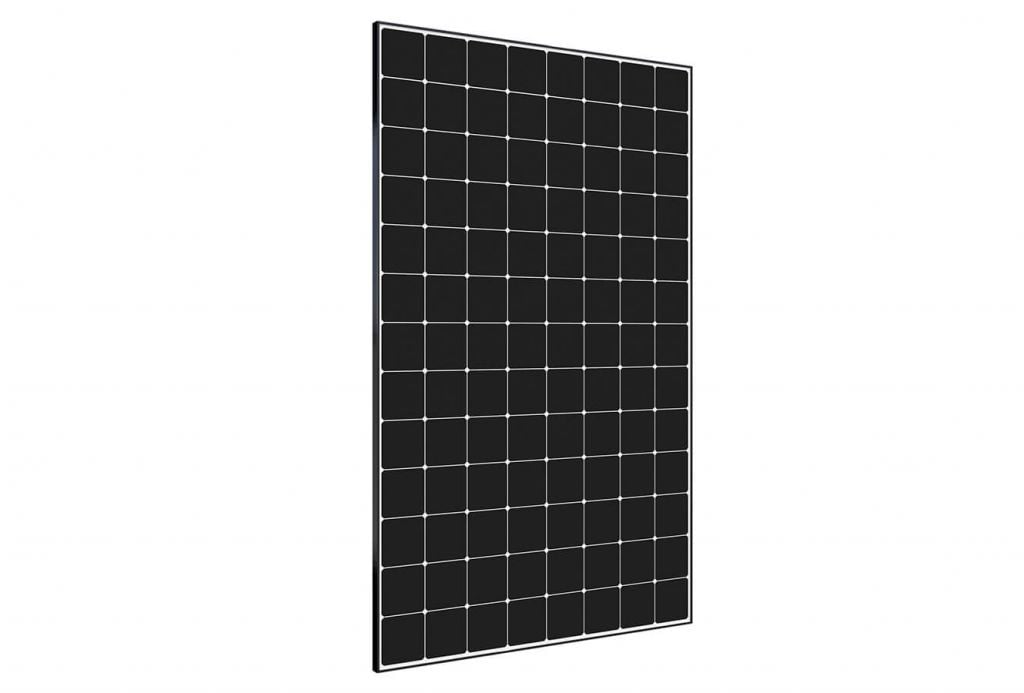
Manufacturer: Sunpower
Power Output: 400W
Maximum Efficiency: 22.6%
Temperature Coefficient: -0.29%/⁰C
Weight: 19kg
Module Type: Monocrystalline
Cell Numbers: 8x13 (104)
Product Warranty: 25 years
Performance Warranty (efficiency after warranty period): 92%
Dimensions: 1690 mm x 1046 mm x 40 mm
REC Alpha Pure
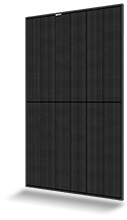
Manufacturer: REC
Power Output: 405W
Maximum Efficiency: 21.9%
Temperature Coefficient: -0.26%/⁰C
Weight: 20.5kg
Module Type: Monocrystalline
Cell Numbers: 132
Product Warranty: 25 years
Performance Warranty (efficiency after warranty period): 92 %
Dimensions: 1812 mm x 1016 mm x 30mm
Panasonic Evervolt
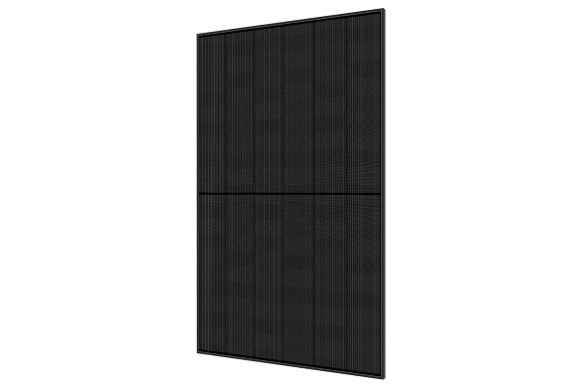
Manufacturer: Panasonic
Power Output: 370W
Maximum Efficiency: 21.2%
Temperature Coefficient: -0.26%/⁰C
Weight: 39.4 kg
Module Type: Monocrystalline
Cell Numbers: 120
Product Warranty: 25 years
Performance Warranty (efficiency after warranty period): 92.0%
Dimensions: 1721 mm x 1016 x 30 mm
Company in directory
Panasonic HIT Kuroblack

Manufacturer: Panasonic
Power Output: 335 W
Maximum Efficiency: 20.0 %
Temperature Coefficient: -0.258 %/°C
Weight: 19 kg
Module Type: Monocrystalline
Cell Numbers: 48 (2x24)
Product Warranty: 25 years
Performance Warranty (efficiency after warranty period): 86.2%
Dimensions: 1590 mm x 1053 mm x 40 mm
Canadian Solar HiDM CS1U-410MS
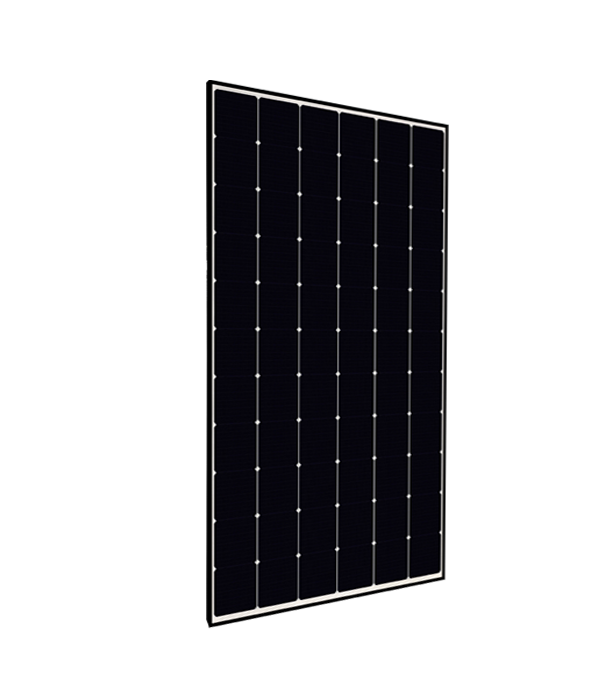
Manufacturer: Canadian Solar
Power Output: 410 W
Maximum Efficiency: 20.4%
Temperature Coefficient: -0.37 % / °C
Weight: 23.4 kg
Module Type: Monocrystalline
Cell Numbers: 162
Product Warranty: 10 years
Performance Warranty: 25 Years Linear Output
Dimensions: 2078 mm × 992 mm × 35 mm
LG NeON R

Manufacturer: LG
Power Output: 370W
Maximum Efficiency: 21.4%
Temperature Coefficient: -0.30 % / °C
Weight: 17.5 kg
Module Type: Monocrystalline / N-type
Cell Numbers: 60 (6 x 10)
Product Warranty: 25 Years
Performance Warranty (efficiency after warranty period): 90.8%
Dimensions: 1700 mm x 1016 mm x 40 mm
LG NeON 2
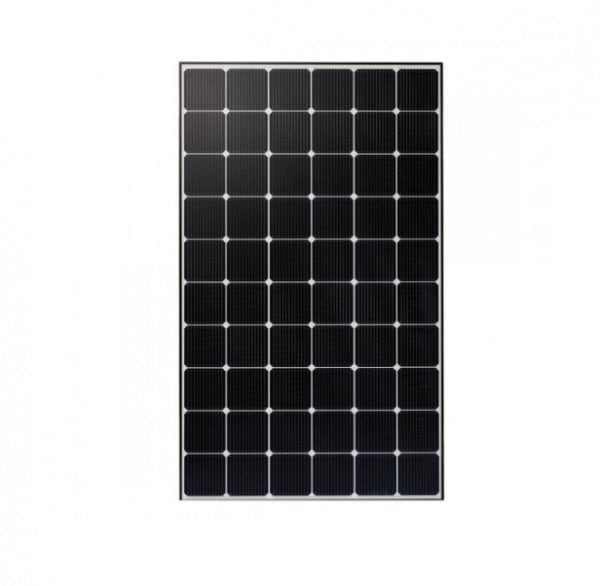
Manufacturer: LG
Power Output: 360W
Maximum Efficiency: 20.8 %
Temperature Coefficient: -0.34% / °C
Weight: 18.0 kg
Module Type: Monocrystalline / N-type
Cell Numbers: 6 x 10
Product Warranty: 25 Years
Performance Warranty (efficiency after warranty period): 90.1%
Dimensions: 1700 mm x 1016 mm x 40 mm
Jinko Solar Tiger Pro 66TR
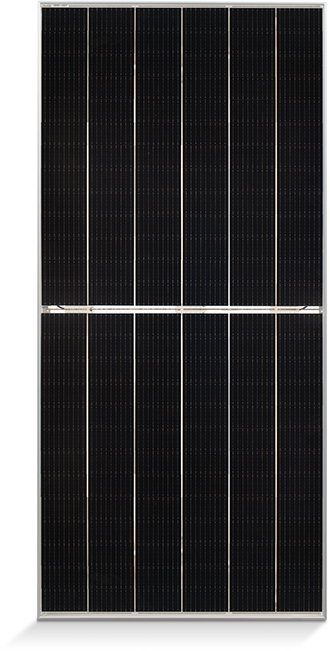
Manufacturer: Jinko Solar
Power Output: 410W
Maximum Efficiency: 21.48%
Temperature Coefficient: -0.34%/°C
Weight: 20.8kg
Module Type: Monocrystalline / N-type
Cell Numbers: 132 (2×66)
Product Warranty: 15 Year
Performance Warranty: 30 Year Linear Power Warrant
Dimensions: 1855 mm ×1029 mm × 30mm
Trina Solar Vertex S
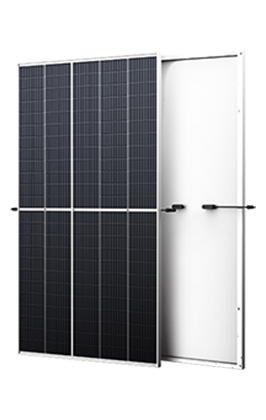
Manufacturer: Trina Solar
Power Output: 405W
Maximum Efficiency: 21.1%
Temperature Coefficient: -0.34%/°C
Weight: 21kg
Module Type: Monocrystalline / N-type
Cell Numbers: 120 Cells
Product Warranty: 25 years
Performance Warranty (efficiency after 25 years warranty period): 84.8%
Dimensions: 1755 mm x1038 mm x 35 mm
Solaria Power XT Pure Black

Manufacturer: Solaria
Power Output: 400 W
Maximum Efficiency: 20.2%
Temperature Coefficient: -0.39%/°C
Weight: 21kg
Module Type: Monocrystalline / N-type
Cell Numbers: 60 cells
Product Warranty: 25 years
Performance Warranty: 25 Years Linear Guarantee
Dimensions: 1643 mm x 1203.9 mm x 39.87 mm
Sharp Solar NQR258H
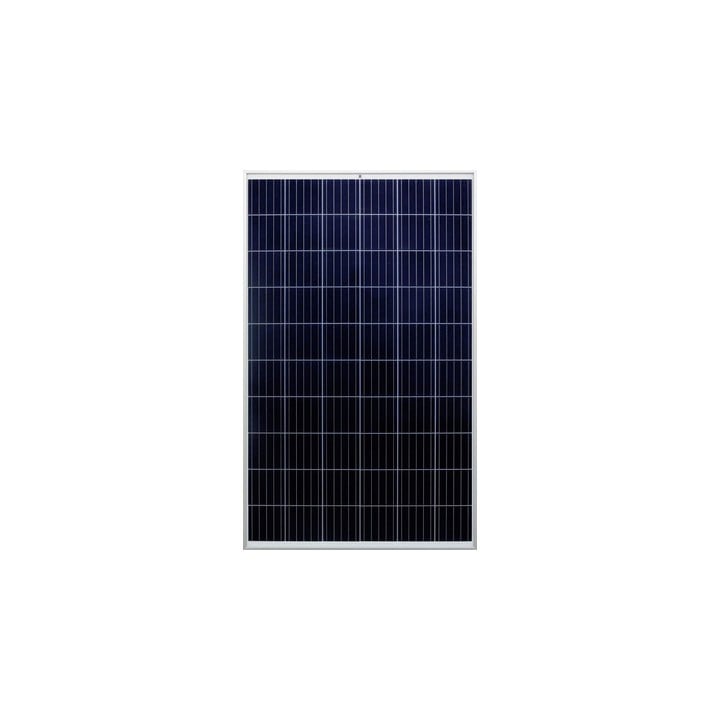
Manufacturer: Sharp Solar
Power Output: 260 W
Maximum Efficiency: 20%
Temperature Coefficient: -0.377 %/°C
Weight: 17 kg
Module Type: Monocrystalline / N-type
Cell Numbers: 48
Product Warranty: 10 years
Performance Warranty: 25 years Linear Performance Guarantee
Dimensions: 1318 mm x 980 mm x 46 mm
Sharp Solar NUSC360
Manufacturer: Sharp Solar
Power Output: 360 W
Maximum Efficiency: 18.5 %
Temperature Coefficient: -0.39 %/°C
Weight: 26 kg
Module Type: Monocrystalline / N-type
Cell Numbers: 72
Product Warranty: 10 years
Performance Warranty (efficiency after 25 years warranty period): 80%
Dimensions: 1956 mm x 992 mm x 40 mm
Futura Sun FU-380M Silk Pro
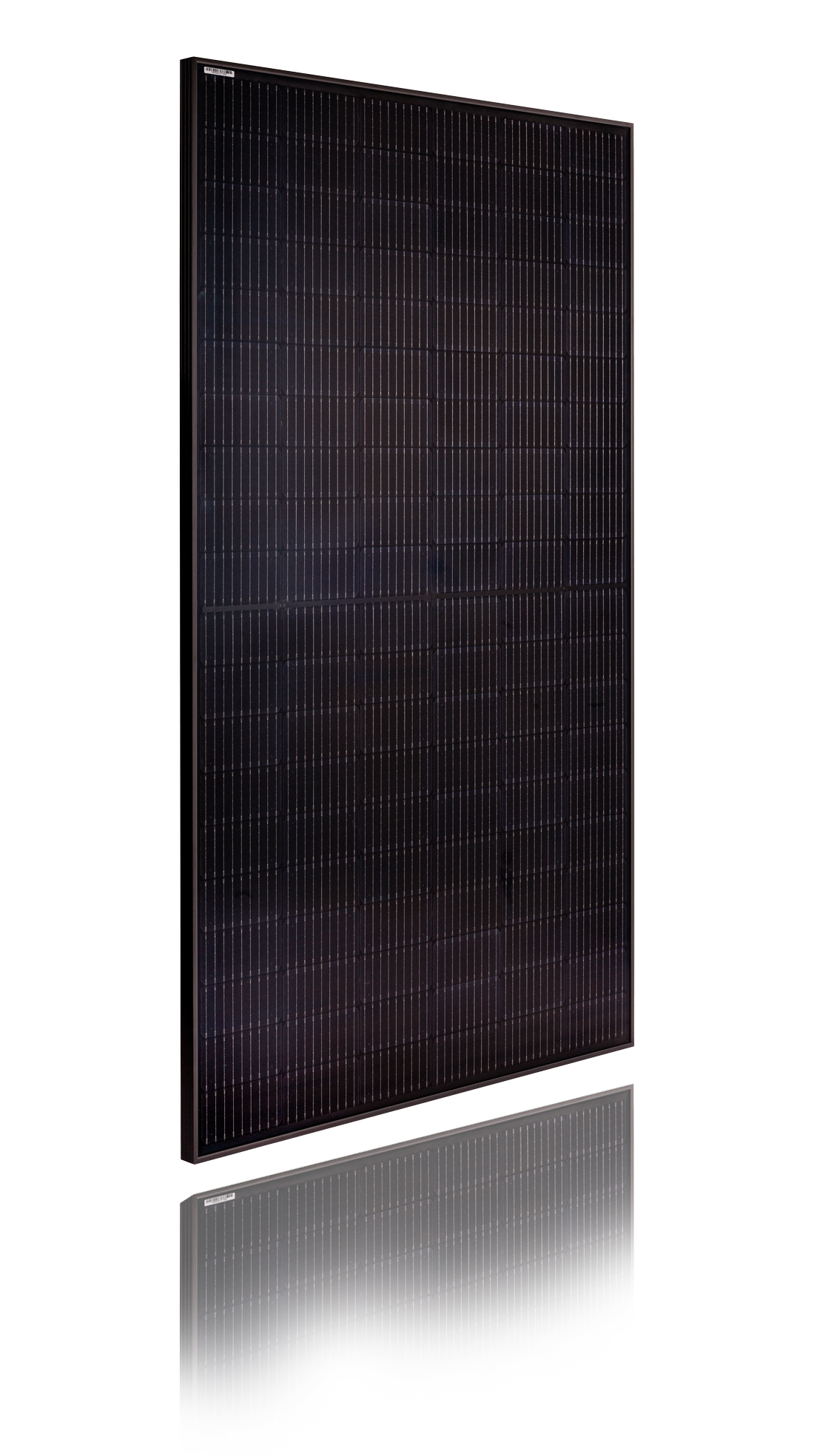
Manufacturer: Futura Sun
Power Output: 380 W
Maximum Efficiency: 20.86 %
Temperature Coefficient: -0.35 %/°C
Weight: 19.7 kg
Module Type: PERC
Cell Numbers: 120
Product Warranty: 15 years
Performance Warranty (efficiency after 25 years warranty period): 87%
Dimensions: 1755 mm x 1038 mm x 35 mm
Futura Sun FUM Zebra
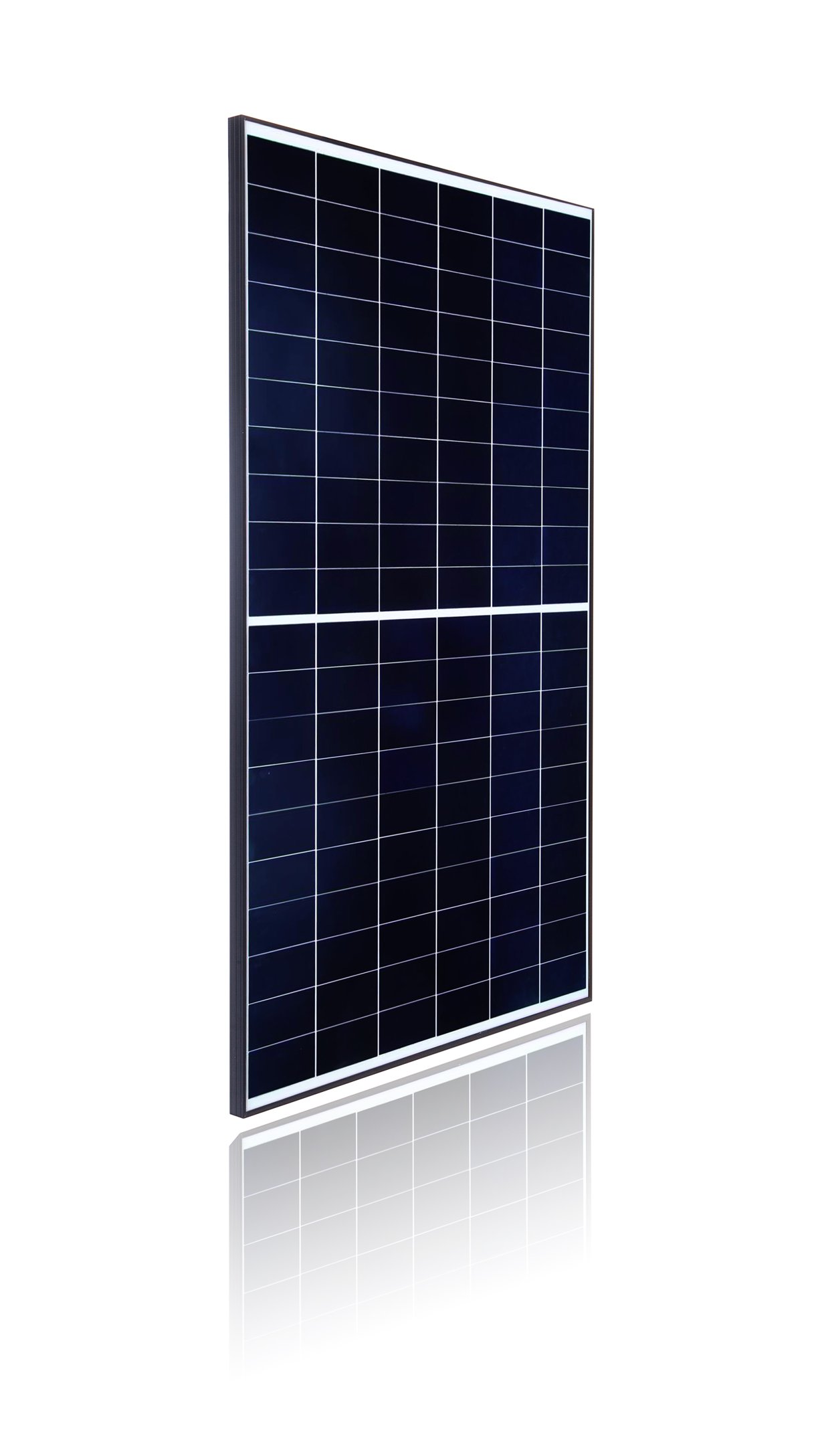
Manufacturer: Futura sun
Power Output: 360 W
Maximum Efficiency: 21.28%
Temperature Coefficient: -0.46 %/°C
Weight: 19.5 kg
Module Type: Monocrystalline half-cut IBC cells
Cell Numbers: 120
Product Warranty: 25 years
Performance Warranty (efficiency after 25 years warranty period): 89%
Dimensions: 1685 mm x 1004 mm x 35 mm
Hanwha Q Peak Duo
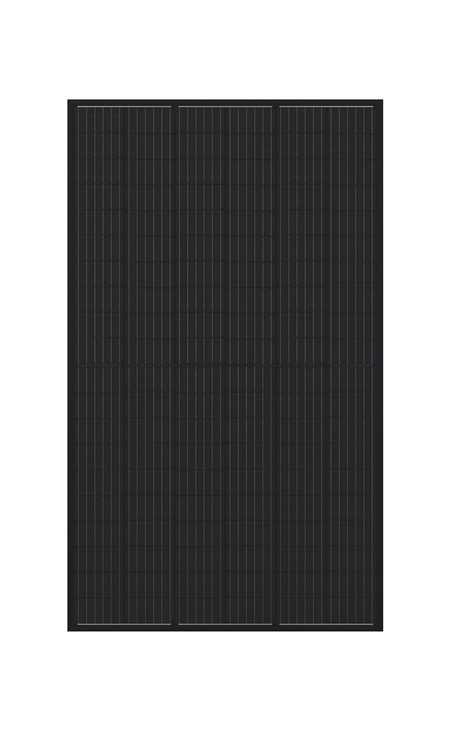
Manufacturer: Hanwha Q Cells
Power Output: 345 W
Maximum Efficiency: 18.7%
Temperature Coefficient: -0.36 %/°C
Weight: 19.9 kg
Module Type: Half-Cut Monocrystalline
Cell Numbers: 120
Product Warranty: 25 years
Performance Warranty (efficiency after 25 years warranty period): 85%
Dimensions: 1740 mm × 1030 mm × 32 mm
Renogy RNG-D100-SS
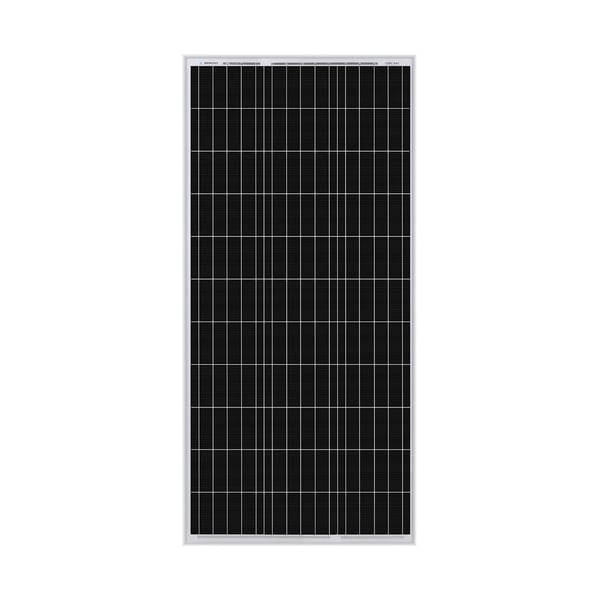
Manufacturer: Renogy
Power Output: 100 W
Maximum Efficiency: 18.3 %
Temperature Coefficient: -0.37 %/°C
Weight: 6.5 kg
Module Type: Monocrystalline
Cell Numbers: 33 (2 x 11)
Product Warranty: 5 years
Performance Warranty (efficiency after 25 years warranty period): 80%
Dimensions: 1076 mm × 509 mm × 35 mm
Get Caught Up with Solar Panel Technologies
To help understand what solar panel would be best, one should have knowledge regarding the technologies used to develop these solar panels. Here are some of the most important technologies you must know.
HJT
Heterojunction PV modules are a type of thin film solar technology. Although they aren’t the latest technology, since they were first introduced in 1983, the concept always had great potential. The idea was pushed back because of their high costs and were only used in small devices such as calculators, but now, the price of cell production had reduced, making its use feasible. Solar cell expert Arvind Shah states that HJT cells will reach their proper commercial use by the year 2030 with a high efficiency rate of 26%; he also mentions that the manufacturers have already attained 25% efficiency in laboratory experiments so it is expected that HJT solar panel production will be initiate anytime soon.
Gapless Shingled cells
Gapless cells are the most recent technology to hit the commercial markets. These cells bring in innovation by maximizing the energy absorption surface area by removing the gaps and overlapping the cells. Intercell gaps between the cells are removed, allowing more space to accommodate more silicon cells in the panel, the increased number of cells therefore mean higher energy generation.
PERC
Passivated Emitter Rear Cells is a technology that is built in solar panels to reduce inefficiency loss that could have been converted into electricity. A passivation layer on the cell reduces the chance of solar energy being converted into heat, because of this reason, the efficiency of PERC PV modules is more than 1% higher that the standard modules and will therefore generate more electricity.
Sometimes electrons are not converted into energy or current, instead they are recombined in to the silicon wafers, this type of energy loss is termed as recombination loss. A technology devised to undo and prevent this type of loss is the Tunnel Oxide Passivated Contact (TOPCon) cell. This type of cell is generally an upgraded version of the PERC cell. The TOPCon was first introduced in 2014, yet it only became a part of a popular commercial technology in 2019. It consists of a thin silicon sheet placed at the rear part of the cell. The technology has been widely successful in increasing solar panel efficiency which paved way for its usage by many manufacturers.
MBBs
Multi Bubars are round, thin copper wires used to reduce energy losses due to resistance. MBBs does this by sending current from the wafers to the interconnecting ribbons, furthermore, the round shape is beneficial as it allows more light rays to be reflected within the cell. MBBs therefore, increase the efficiency of solar panels.
Split Cells
As the name suggests, in half split cells, cells are cut in half, their current resistance decreases, enabling more current and power output. Moreover, they are perfect for small areas, the two parts can take turns in performing in case of shade.
IBC
Interdigitated Back Contact cell is a type of rear contact cells, that have rear contact grid, in addition to the frontal grid, to improve the efficiency of the cell. The IBC cell attempts to reduce the damage done by shading by the use of rear contacts. A cell made of high-quality material is used to absorb the current generated by the electron at the surface of the cell.
High Density Cells
The high-density cell technology is slightly similar to the shingled cell technology, as both reduce the gaps between the cells to increase cell surface area. However, high density cell technology does this by reducing the cell gap from 2mm to around approximately 0.5mm this allows the traditional busbar to bend and to connect the front cell area to the rear cell area. Furthermore, with the invention of the multi-busbar technology, the cell gap of 0.5mm is almost completely eliminated.
An example of this type of cell would be the tilling ribbon cell. Tilling ribbon technology, the cells never, in fact, overlap but they are cut in half, a ribbon is placed between the two cut cells in order to eliminate mechanical stress in the cells. Jinko has successfully achieved and commercialized this technology, the experiment results show: reduced power loss due to less transmission distance and increased performance even in low irradiance.
Perovskite solar panels
Although the idea has been around for decades, perovskite solar panel technology is still being researched and thoroughly experimented to give great results in the future. The name of the technology is based upon the crystal used to manufacture it; perovskite is used as the base on which silicon is applied to generate electricity. The technology itself is old, initially it showed low results, in 2006 the efficiency of these cells was found to be only 3%, but with intense research and development, the technology showed great results, with a 20% increase in efficiency in 2014.
Experts are of the stance that there is still great room for improvement, therefore, they are continuing their research on perovskite solar panels. It is clear to see that in terms of efficiency, perovskite is doing well, however, its performance in other categories is still questionable. The solar panels’ current performance is adversely affected by long exposure to light, heat and moisture, and are quick to depreciate in quality. The main targets of the research are to increase its efficiency up to 30%, and secondly to improve its long-term quality performance.
Bifacial Solar Panels
Bifacial modules feature solar cells on both sides (not on front side only). Installation of such panels on reflecting surfaces boosts the energy generation. Solar panel makers state that double-sided panels can produce 30 percent extra energy. There are multicrystalline bifacial modules available. However, the majority is made of single-crystal Silicon. Below we have listed solar companies manufacturing the best bifacial solar panels (with the highest efficiency) in the United Kingdom.
Top Bifacial Solar Panels
|
Manufacturer
|
Solar panel
|
Power/efficiency
|
|
Trina Solar
|
HONEY PD05
|
285W / 17.4%
|
|
Trina Solar
|
HONEY M PLUS
|
315W / 19.2%
|
|
Panasonic
|
N300
|
300W / 19.5%
|
|
Project Solar
|
EVO Ultramax
|
330W / 19.66%
|
|
LG
|
NeON®2 Black
|
320W / 18.7%
|
|
Canadian Solar
|
KuPower
|
300W / 18.05%
|
The Best Solar Panel Manufacturers
If you’d like to get to know what other manufacturers produce the top-ranked solar panels (by efficiency, temperature coefficient and product warranty) as of 2019, please check the list below:
| Manufacturer | Efficiency range | Temperature coefficient range | Materials warranty |
|---|---|---|---|
| Amerisolar | 14.75% to 17.01% | -0.43 to -0.43 | 12 years |
| Axitec | 15.37% to 19.41% | -0.44 to -0.39 | 12 years |
| BenQ Solar (AUO) | 15.5% to 18.3% | -0.42 to -0.39 | 10 years |
| Boviet Solar | 16.5% to 17.5% | -0.4 to -0.4 | 12 years |
| Canadian Solar | 15.88% to 19.91% | -0.41 to -0.37 | 10 years |
| CentroSolar | 15.3% to 17.8% | -0.44 to -0.42 | 10 years |
| CertainTeed Solar | 15.4% to 19.9% | -0.45 to -0.37 | 10 years |
| China Sunergy | 14.98% to 21.17% | -0.42 to -0.41 | 10 years |
| ET Solar | 15.67% to 19.07% | -0.44 to -0.41 | 10 years |
| GCL | 16% to 17% | -0.41 to -0.41 | 10 years |
| Grape Solar | 16.21% to 17.64% | -0.5 to -0.4 | 10 years |
| Green Brilliance | 14.24% to 15.58% | -0.45 to -0.45 | 5 years |
| Hansol | 14.97% to 18.05% | -0.45 to -0.41 | 10 years |
| Q CELLS | 17.1% to 19.6% | -0.4 to -0.35 | 12 years |
| Heliene | 15.6% to 19.3% | -0.43 to -0.39 | 10 years |
| Hyundai | 16.2% to 19.4% | -0.42 to -0.39 | 10 years |
| JA Solar | 15.8% to 19.8% | -0.4 to -0.36 | 12 years |
| JinkoSolar | 15.57% to 19.88% | -0.4 to -0.36 | 10 years |
| Kyocera | 14.75% to 16.11% | -0.45 to -0.45 | 10 years |
| LG | 18.4% to 21.7% | -0.4 to -0.3 | 25 years |
| LONGi Solar | 17.4% to 19.3% | -0.39 to -0.37 | 10 years |
| Mission Solar Energy | 18.05% to 18.95% | -0.38 to -0.38 | 12 years |
| Mitsubishi Electric | 16.3% to 16.9% | -0.45 to -0.44 | 10 years |
| Neo Solar Power | 16% to 17% | -0.42 to -0.42 | 10 years |
| Panasonic | 19.1% to 20.3% | -0.39 to -0.26 | 10 years |
| Peimar Group | 16.6% to 19.36% | -0.43 to -0.4 | 20 years |
| Phono Solar | 15.66% to 18.44% | -0.45 to -0.4 | 12 years |
| REC Group | 15.2% to 21.7% | -0.4 to -0.26 | 10 years |
| RECOM | 16% to 19.36% | -0.4 to -0.39 | 12 years |
| ReneSola | 14.9% to 16.9% | -0.43 to -0.4 | 10 years |
| Renogy Solar | 15.3% to 18.5% | -0.44 to -0.44 | 10 years |
| RGS Energy | 15.6% to 17.1% | -0.45 to -0.45 | 11 years |
| Risen | 16.3% to 19.6% | -0.39 to -0.39 | 12 years |
| S-Energy | 15.61% to 19% | -0.4 to -0.39 | 10 years |
| Seraphim | 15.67% to 17.52% | -0.43 to -0.42 | 10 years |
| Silfab | 17.8% to 20% | -0.42 to -0.36 | 12 years |
| Solaria | 19.4% to 20.5% | -0.39 to -0.39 | 25 years |
| Solartech Universal | 19% to 19.9% | -0.26 to -0.26 | 15 years |
| SunPower | 16.5% to 22.8% | -0.38 to -0.29 | 25 years |
| Talesun Energy | 16.2% to 19.5% | -0.4 to -0.38 | 10 years |
Why Solar Panels Are Worth Installing
- They allow saving money on energy bills
Producing free electricity from your solar array will allow you to reduce the amount of energy you have to purchase from electricity suppliers, which will considerably lower your expenses.
2. Using clean energy minimizes greenhouse gas emission
While conventional energy sources are based on fossil fuel combustion emitting huge volumes of CO2, generation of solar electricity uses green energy and does not release any harmful gases.
3. One can generate electricity twelve months a year
No doubt that PV modules perform better in the summertime, when the sun shines brightly during most of the day. However, solar electricity can also be produced on dull days, so energy generation is possible in all seasons.
4. Solar panels make you less dependent on the power grid
In-home solar electricity production reduces your reliance on the electrical grid because you don’t have to purchase as much power as before. Supplementing your solar generating system with energy storage will make you even freer by enabling you to accumulate the unused energy for later usage during the dark hours.
